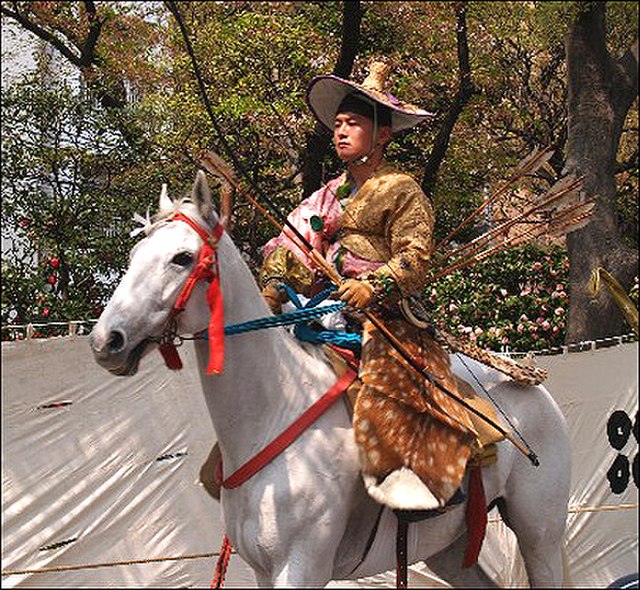Kasagake or Kasakake is a type of Japanese mounted archery. In contrast to yabusame, the types of targets are various and the archer shoots without stopping the horse. While yabusame has been played as a part of formal ceremonies, kasagake has developed as a game or practice of martial arts, focusing on technical elements of horse archery.
Kasagake depicted around 1250 in emakimono "Obusuma Saburo ekotoba".
The hat the man wearing is ayaigasa, which was initially used as targets for kasagake.
Mounted archery is a form of archery that involves shooting arrows while on horseback. A horse archer is a person who does mounted archery. Archery has occasionally been used from the backs of other riding animals. In large open areas, mounted archery was a highly successful technique for hunting, for protecting herds, and for war. It was a defining characteristic of the Eurasian nomads during antiquity and the medieval period, as well as the Iranian peoples such as the Alans, Sarmatians, Cimmerians, Scythians, Massagetae, Parthians, and Persians in Antiquity, and by the Hungarians, Mongols, Chinese, and Turkic peoples during the Middle Ages. The expansion of these cultures have had a great influence on other geographical regions including Eastern Europe, West Asia, and East Asia. In East Asia, horse archery came to be particularly honored in the samurai tradition of Japan, where horse archery is called Yabusame.
Mounted archery in Tibet
Japanese mounted archers in the Gosannen War, 14th century painting by Hidanokami Korehisa
A Timurid drawing of an Ilkhanid horse archer. Signed (lower right) Muhammad ibn Mahmudshah al-Khayyam Iran, early 15th century. Ink and gold on paper
Assyrian relief of a mounted archer






